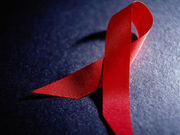Deaths continue 10-year decline, but new infections on the rise in many countries, especially in Africa
TUESDAY, July 19, 2016 (HealthDay News) — The number of HIV/AIDS deaths worldwide each year has fallen since peaking in 2005, but the number of new HIV infections is up in 74 countries, according to a study published online July 19 in The Lancet HIV to coincide with the 21st International AIDS Conference, held from July 18 to 22 in Durban, South Africa.
Deaths from HIV/AIDS fell to 1.2 million in 2015 from 1.8 million in 2005. Though the number of new HIV infections has decreased since a peak of 3.3 million in 1997, it has been relatively stable at about 2.5 million a year for the past decade. Worldwide, new HIV infections fell just 0.7 percent a year between 2005 and 2015, compared to 2.7 percent a year between 1997 and 2005. Sub-Saharan Africa continued to be a challenge, accounting for three-quarters of new HIV infections (1.8 million) in 2015. Last year, south Asia had 8.5 percent (212,500) of new infections; southeast Asia, 4.7 percent (117,500); and east Asia, 2.3 percent (57,500).
Between 2005 and 2015, the percentage of people with HIV who were receiving antiretroviral therapy rose sharply from 6.4 to 38.6 percent among men, and from 3.3 to 42.4 percent among women. Still, most countries remain well short of the United Nations’ target for 81 percent of people with HIV to be getting antiretroviral therapy by 2020. But researchers noted that four countries are close: Sweden, with 76 percent; and the United States, the Netherlands, and Argentina at about 70 percent.
“Although scale-up of antiretroviral therapy and measures to prevent mother-to-child transmission have had a huge impact on saving lives, our new findings present a worrying picture of slow progress in reducing new HIV infections over the past 10 years,” lead author Haidong Wang, Ph.D., an assistant professor of global health at the University of Washington’s Institute for Health Metrics and Evaluation in Seattle, said in a journal news release.
Copyright © 2016 HealthDay. All rights reserved.








